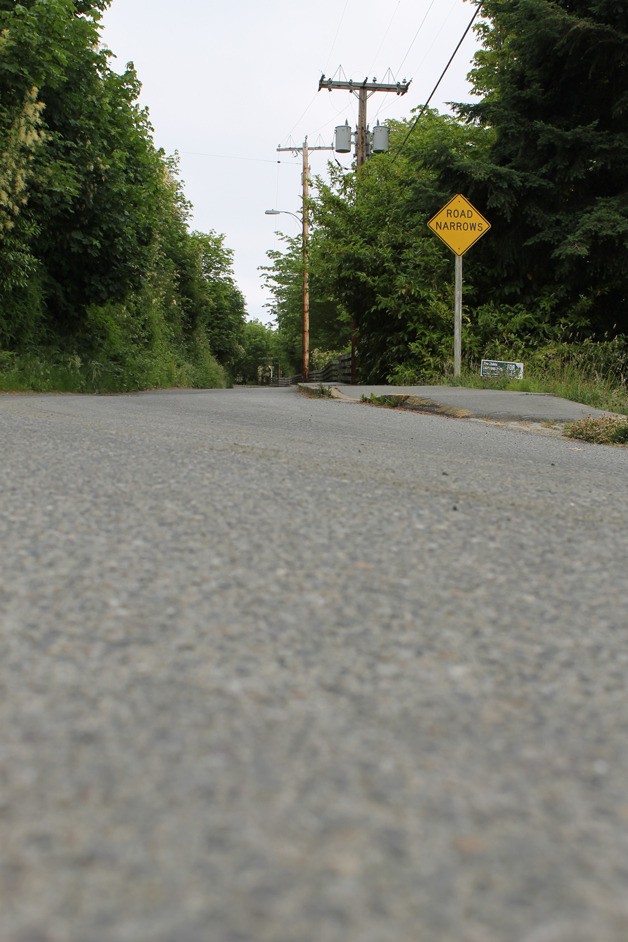Heeding public comments from an April charrette in Langley, city leaders are once again taking a step back on plans to improve access the marina. Specifically, Langley Director of Community Planning Michael Davolio said this week that a need must be identified before the city can decided on a longterm and permanent solution.
Davolio presented his report to the council with the understanding that he’s asking the planning advisory board to forward a similar recommendation to the council.
“We wanted to be sure before we spent a lot of money on a permanent solution that we documented a need,” Davolio said.
The option of pursuing a transit service that could circulate around downtown and perhaps to the Clinton Ferry Terminal on weekends was supported by three city council members. Council members Bruce Allen and Rene Neff were not present for the discussion.
A bit of news about the Port of South Whidbey, which owns and operates the marina of South Whidbey Harbor, was also shared. Port Commissioner Ed Halloran said the district is leasing a six-person electric golf cart from June through August to help move people up and down the Wharf Street hill. That adds capacity to the electric golf cart operated by the Langley Main Street Association.
Initially, Langley had hoped Island Transit would be able to provide a weekend bus route that circulated through Langley and down to the harbor with a few forays to the Clinton Ferry Terminal. Davolio said that is no longer likely this summer, but other possibilities remain.
Contracting service with the Whidbey SeaTac Shuttle company and All-Island Taxi is being considered. It could possibly be paid for out of the city’s tourism fund, user fares and business sponsorships. In Davolio’s report to the council, he said the service would last 10 weeks during the busy tourism season in summer.
Complicating the service is that the city has stated one of its goals is to aid mobility-impaired or limited people access the Langley waterfront and harbor.
One of the lingering issues was that none of the numbers available were consistent or representative enough, Davolio said. He cited that electric golf cart passenger counts were inconsistently managed by the Langley Main Street Association and the Port of South Whidbey measuring its capacity in linear dock feet space usage, rather than the number of people visiting as appropriate for those groups, but not necessarily appropriate for the city to prove a need to residents for an infrastructure project.
“I appreciate Michael’s comments about keeping statistics,” Halloran said, adding that one person should be responsible for tallying numbers with verification or review by the planning director.
Once upon a time, however, the city’s need was warranted enough for the Island County Council of Governments to issue it $500,000 of grant funding. First, the city was issued $242,000 to widen Wharf Street. That was later scrapped in favor of building a funicular from the bottom of Wharf Street up to Cascade Avenue, and the remainder of the money was granted to the city for the project.
A possible expiration of the earmarked funds has worried many at City Hall and supporters of the funicular project. Mayor Fred McCarthy, who is on the Council of Governments, said the feeling in Langley is that if no one asks about a deadline, there won’t be one.
“As long as nothing’s said, the money’s still there,” said McCarthy, during Monday’s council meeting.
Tim Callison, who is running for mayor, said the city’s pursuit of data collection is a great step. A boater who uses the marina to launch himself, Callison said the different types of stakeholders and users may need a “manifold” of solutions. One of his ideas for the street is to create a traffic control system, either by a flashing light or restricting left turns onto Cascade/First or right turns onto Wharf Street. Controlling traffic, especially once boating season gets in full swing, is important for the city given the parking and space limitations along the narrow road and marina area.
“It’s quite heavy now and it’s not even crabbing season,” he said.
“The corner is completely blind when you turn that corner,” he added.
Councilman Thomas Gill, who is also running for mayor in a three-person primary race, said the road’s increased use should be considered as well. He said Wharf Street was not built with the amount of traffic it serves.
“That roadway wasn’t designed to be used 300-400 times a month,” he said.
Council candidate Eric Levine said he spoke to one of the golf cart drivers who reported ridership is low. During one Saturday, he counted the passengers himself on seven different trips from the marina and tallied only four riders who were all on the same cart.
“I’m not claiming this was a representative for the entire program, I was only there one day, but it was interesting,” he said.
Levine, who has been an ardent supporter of the funicular, said he still believes it’s the proper project for Langley.
“It’s the only option that provides service 24/7,” he said.
Sharon Emerson, also running for mayor, asked the council to go back to the original grant fund’s intent of widening Wharf Street and installing a small debris retaining wall to catch small landslide material.
The mayor said the report was not the final step, and that several long-term options may be presented to the planning board and city council.
“We’re still listening but we’re moving on some items,” he said.



